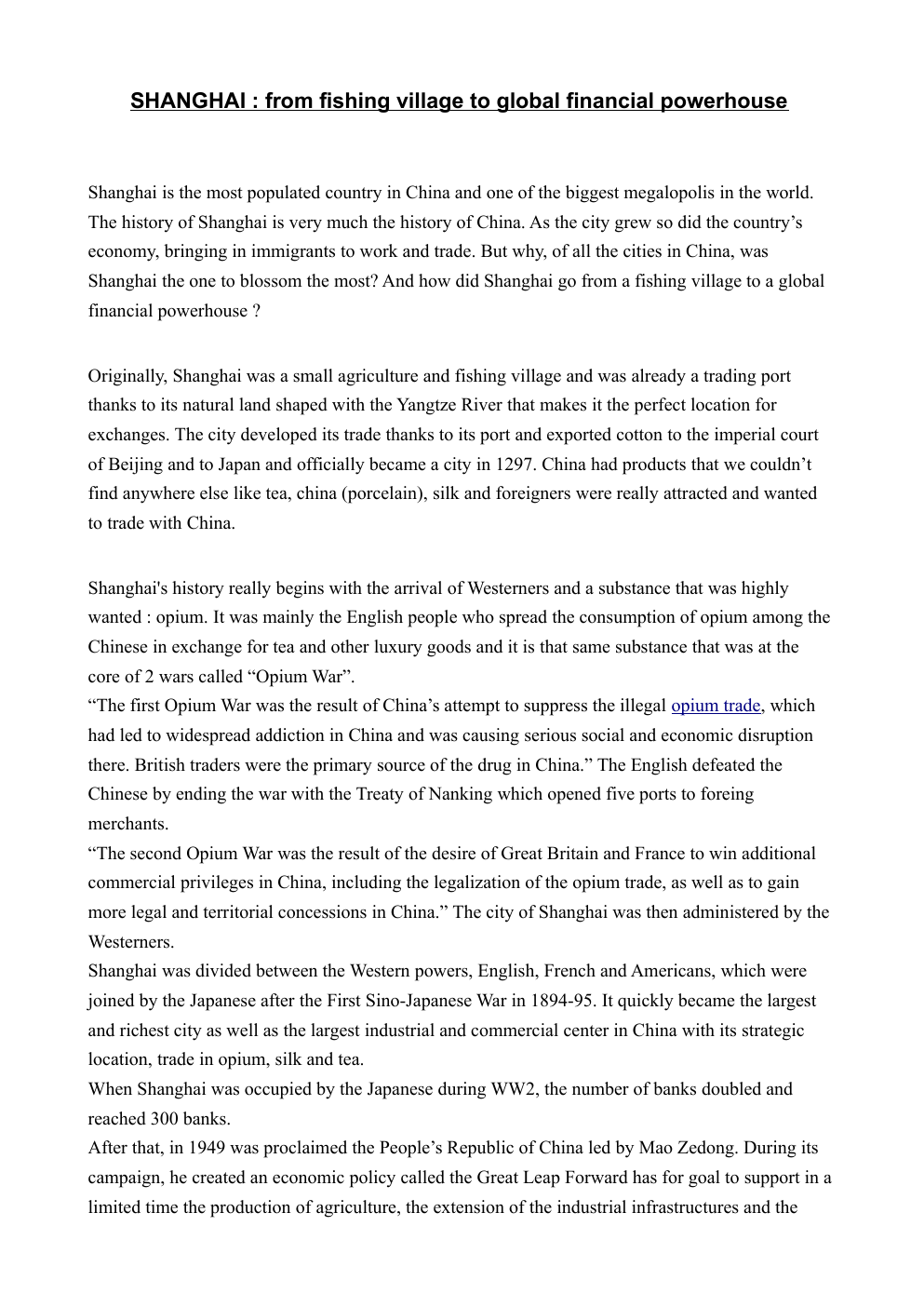SHANGHAI : from fishing village to global financial powerhouse
Publié le 26/04/2022

Extrait du document
«
SHANGHAI : from fishing village to global financial powerhouse
Shanghai is the most populated country in China and one of the biggest megalopolis in the world.
The history of Shanghai is very much the history of China.
As the city grew so did the country’s
economy, bringing in immigrants to work and trade.
But why, of all the cities in China, was
Shanghai the one to blossom the most? And how did Shanghai go from a fishing village to a global
financial powerhouse ?
Originally, Shanghai was a small agriculture and fishing village and was already a trading port
thanks to its natural land shaped with the Yangtze River that makes it the perfect location for
exchanges.
The city developed its trade thanks to its port and exported cotton to the imperial court
of Beijing and to Japan and officially became a city in 1297.
China had products that we couldn’t
find anywhere else like tea, china (porcelain), silk and foreigners were really attracted and wanted
to trade with China.
Shanghai's history really begins with the arrival of Westerners and a substance that was highly
wanted : opium.
It was mainly the English people who spread the consumption of opium among the
Chinese in exchange for tea and other luxury goods and it is that same substance that was at the
core of 2 wars called “Opium War”.
“The first Opium War was the result of China’s attempt to suppress the illegal opium trade, which
had led to widespread addiction in China and was causing serious social and economic disruption
there.
British traders were the primary source of the drug in China.” The English defeated the
Chinese by ending the war with the Treaty of Nanking which opened five ports to foreing
merchants.
“The second Opium War was the result of the desire of Great Britain and France to win additional
commercial privileges in China, including the legalization of the opium trade, as well as to gain
more legal and territorial concessions in China.” The city of Shanghai was then administered by the
Westerners.
Shanghai was divided between the Western powers, English, French and Americans, which were
joined by the Japanese after the First Sino-Japanese War in 1894-95.
It quickly became the largest
and richest city as well as the largest industrial and commercial center in China with its strategic
location, trade in opium, silk and tea.
When Shanghai was occupied by the Japanese during WW2, the number of banks doubled and
reached 300 banks.
After that, in 1949 was proclaimed the People’s Republic of China led by Mao Zedong.
During its
campaign, he created an economic policy called the Great Leap Forward has for goal to support in a
limited time the production of agriculture, the extension of the industrial infrastructures and the.
»
↓↓↓ APERÇU DU DOCUMENT ↓↓↓








